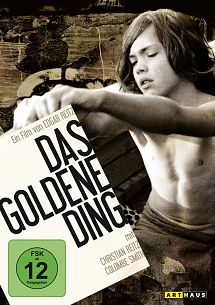 Das Goldene Ding is 1972 made for TV film, released in West Germany, which follows in much detail the Greek myth of Jason. It’s the retelling of the legend using a new and unique approach to filmmaking and storytelling for its time. It’s an approach that’s very different even compared to the 1963 Columbia Pictures fantasy feature film Jason and the Argonauts or the TV miniseries with the same name, directed by Nick Willing and produced by Hallmark Entertainment in 2002.
Das Goldene Ding is 1972 made for TV film, released in West Germany, which follows in much detail the Greek myth of Jason. It’s the retelling of the legend using a new and unique approach to filmmaking and storytelling for its time. It’s an approach that’s very different even compared to the 1963 Columbia Pictures fantasy feature film Jason and the Argonauts or the TV miniseries with the same name, directed by Nick Willing and produced by Hallmark Entertainment in 2002.
As someone who has always been interested in Greek Mythology (one of my favorite books as a kid was myth and legends from ancient Greece. By the time the teachers began to introduce them at school, I already knew most myths by heart along with all hero’s names and, of course, the monsters they fought). So I took a particular interest in this film, which explains the length and the details in the review I’ve written. Additionally, I believe that how the film is shot represents the legend of Jason more accurately than any of its other adaptations in cinema. Therefore, in my opinion, this film is a “must-see” for anyone who is currently studying or just has an interest in, Greek myth and legends.
The film begins with a scene showing the young Jason meeting his father, King Aeson, and also the person who is the only survivor of an expedition in the search for the Golden Fleece. It soon becomes clear that this is not the first expedition but one of many that the king has equipped, overtaxing his citizens. The King believes that once the Gold of Colchis is found, the life of people in his kingdom would become easier as everyone would be rich and happy. If that happened, then his only role (and that of his son) would be administering the wealth. Yet, after so many expeditions have failed, the common people feel that their well-being is being threatened by the ill fated ambition of their king as, for them, the Golden Fleece is nothing but a utopian fantasy. And that’s why the king is murdered while planning the next expedition. Viewers who are interested in politics and sociology may recognize some social issues and facts in the film such as: The mood of the commons keeps changing and one cannot rely on that.
After the murder of his dad, the young prince Jason – now king — undertakes the responsibility of proving his father right and bringing the wealth to his kingdom. As was the common practice in the ancient days, for him there was no period of adolescence – one day he is a kid, a young prince and on the next day he is already looked upon as an adult who is able to make decision and issue orders. He summons everyone who has strength and bravery to travel with him – the kings of Sparta, Greece, Thebes, Arcadia, Trace and Arane — all young and eager for adventure. The young and blind Orpheus is also with them along with his magical lyre. These are the Argonauts since the name of their galley is Argo, built by the shipwright Argus with the help of Athena.
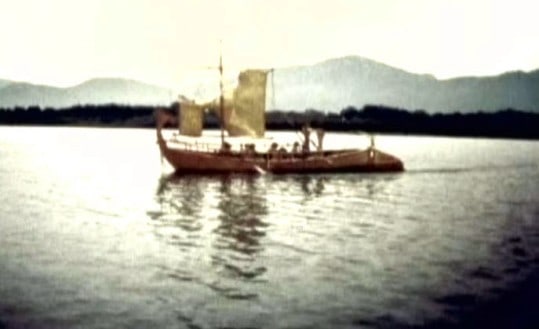
Their first stop is Kyzicos. Here they meet the Doliones, who treat the crew well. But after departure from Kyzicos, they get lost and mistakingly land once again on the same shore in the night. In the dark, they are mistaken for enemies by the Doliones and, in the fight that arises, the heroes manage to kill most of the Doliones. Only in the morning do they discover their fatal mistake. From here they sail to the isle of Lemnos (which in the mythology is the first stop). Here there live only women. Because the women neglected their worship of Aphrodite, she made the women so unattractive that the men, instead, had concubines from a nearby island. Angry at this, the women killed their men while they slept. Their queen explains to Jason that, when they learn how to live independently, they will seek other men — like Jason and his fellow sailors.
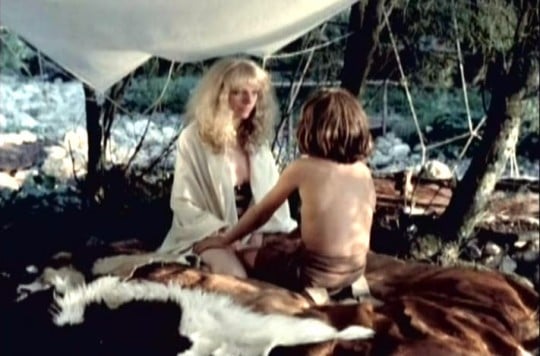
After Lemnos, the boat arrives at Mysia. Here one of the heroes, Hylas, attracts the nymphs because of his good looks. He is pulled down the stream and is lost forever. After Mysia, they have to get through the Symplegades, which are two clashing rocks in the sea, as this is the only passage to Colchis and the treasure. Will they manage or will they perish?
Even if, supposedly, Jason and the Argonauts traveled as far as “the other side in the world” in their quest for the Golden Fleece – while watching the film one remains with the impression that the filming locations were not that far apart, and that it’s only by the clever usage of the camera (long distance scenes, scenes shot from a low view point as to seemingly extend the size of the fields or the sea) that the viewer, in the end, is convinced that all the various stopovers are indeed locations separated by vast distances. The slow pace of the action, which in other films some may find rather annoying, also plays a role in allowing viewers to associate with the kings of Greece and thereby produce the feeling that they are participating in a long and challenging quest in search of the Golden Fleece. Just as one of the kings states that he no longer cares for the preset goal of the adventure as long as they keep visiting exotic locations and meet various cultures, after the first hour, the viewer stops expecting the grand finale and willingly becomes an explorer along with the Argonauts.
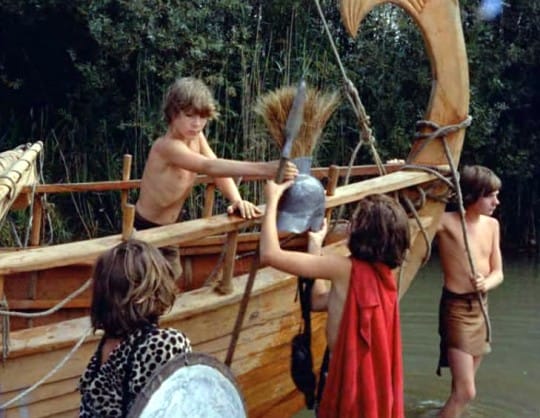
Das Goldene Ding is written and directed by four filmmakers: Alf Brustellin, Nicos Perakis, Edgar Reitz, and Ula Stöckl. The central role of Jason is played by Christian Reitz (Son of director Edgar Reitz). The other actors: Oliver Jovine (Orpheus), Wolfganf Heinz (Castor), Michael Heinz (Pollux), Michael Heron (Herakles), who participate in the quest, are similarly aged (12 to 14 years old) and, along with the rest of the cast, do not appear to have any previous acting experience. Yet, the boys have such a natural talent and interest in the story that their inexperience as actors does not lessen the film’s impact on its viewers. The cast of the film and the usage of boys to portray the Argonauts remind us of the Hungarian film The Annunciation (Angyali üdvözlet ), or the 1963 adaptation of William Golding’s novel Lord of the Flies. The ultra-masculinity of the young cast is empathized by the usage of clothes and props, which closely resemble the ones that the real ancient people wore. The more avid film-goers will probably be reminded of the teenage actor Sabu Dastigir who, at age twelve in 1937, was signed for a role in the film Elephant Boy, which brought him as much popularity at the time as Hollywood sensation Mickey Rooney. Most likely, the filmmakers of Das Goldene Ding were extremely knowledgeable of Greek mythology. One senses this by the way actors were cast and the props selected. They bring to mind ancient artifacts such as the Apulian red-figure calyx crater (340 BC–330 BC), kept in the Louvre museum in Paris at the Department of Greek, Etruscan and Roman Antiquities. [1,2].
When asked about the film, one of its directors, Ula Stöckl, explains the choice of their cast and film techniques used with the following words:
“We did extensive research at all the libraries and relied mainly on sources from JJ Bachofen’s matriarchal, Hermann Frankel notes on the Argonautica of Apollonius and Apollonios itself to strengthened our belief that it is the most ancient heroes actually are children. The majority of them had their main exploits already at 15, 16 years behind him Theseus, for example, and not common to us, killed at the age of 15 by the Minotaur. “[3]
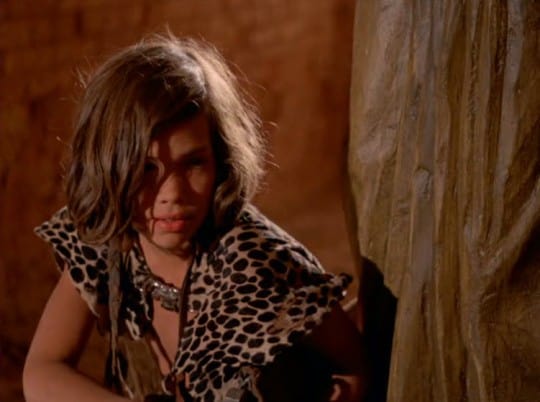
The film directors used a variety of color nuances, mainly to distinguish between various social classes or set a mood for the scenes. Even if the technique used in the lighting of the film was intended to make it appear to be overcast, with the intent that the illumination of some scenes would be gende or soft due to the lack of definition, one remains with the feeling that the camera work could have been better, especially when it comes to the selective exposure of some scenes.
A mixture of fantasy and action, combined with coming-of-age nuances and a strong focus on human nature, Das Goldene Ding is a film some may like, while others will find it lengthy and uneventful. It will largely depend on the predisposed viewpoint from which the viewer approaches the movie. I do not hesitate to recommend it as, to me, it deserves a special mention among the coming of age genre films that educate and transmit a powerful message to its viewers.
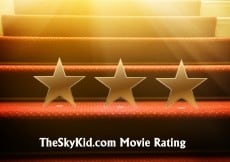 Sources used:
Sources used:
- Wikipedia , Topics in Greek mythology , Jason
- Wikipedia , Jason and the Argonauts (1963 film)
- Das goldene Ding, Unerhört weiblich
This review would not have been possible without the valuable support of CVMC.net who provided a DVD of the film subtitled in English.